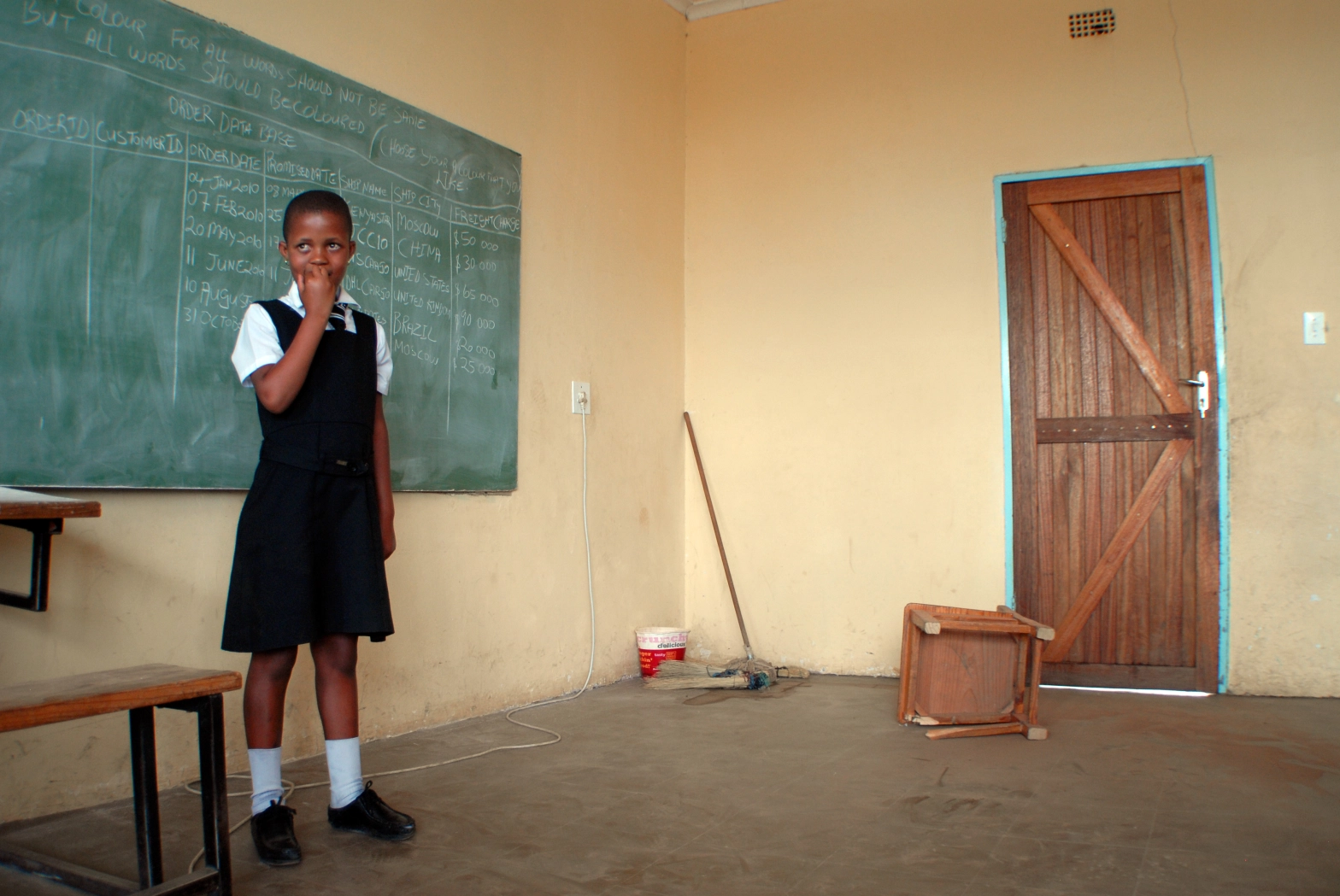Although this post deals with art and education in the USA, we thought it was a good share due to the lack of support for the arts in Lesotho, where an art program is rarely found in schools. Originally posted in Huffington Post by John M. Eger.
Watch the TEDTalk that inspired this post.
With America slowly awakening to the need to turn out creative and innovative workers who can join the 21st century workplace — it’s already 2012 — we have to change the current emphasis on STEM, for Science, Technology, Engineering and Math, to STEAM, by insuring that the whole brain is nurtured through the arts.
Too many, simply put, see art as nice but not necessary…children’s art, even less valuable.
But more neuroscientists, psychologists, educators and others are finding that the arts help nurture the right hemisphere of the brain, and is exactly what the more left brained curriculum needs to create the new thinking skills leading to creativity. Indeed, it is becoming increasingly apparent that arts initiatives will be the hallmarks of the most-successful schools and universities and, in turn, the most-successful and vibrant twenty-first-century cities and regions.
As Sir Ken Robinson, international expert on creativity and education has said, “We are all born creative… ” but “creativity gets squeezed out of us” about the 4th grade. Fortunately, U.S. Secretary of Education Arne Duncan, the National Science Foundation (NSF) and the National Endowment for the Arts (NEA) seem to agree: education is badly in need of an overhaul and the potential is hopeful.
STEAM — including the arts and art integration — is fundamental to our effort to reinvent our schools, our communities and our nation. To accomplish our goals, however, we desperately need to be willing to change the paradigm, reinvent our schools — the very concept of education — and meet the challenges of a global economy.
Two years ago Duncan said, “The arts can no longer be treated as a frill … Arts education is essential to stimulating the creativity and innovation that will prove critical for young Americans competing in a global economy.”
More recently, NSF, in a grant of $2,654,895 called “Integrating Informal STEM and Arts-Based Learning to Foster Innovation” they made clear that it hopes that a new model for education will become apparent over the next few years. The goal of the project’s development activities is to experiment with a variety of “innovation incubator” models in cities around the country. Modeled on business “incubators” or “accelerators” that are designed to foster and accelerate innovation and creativity, these STEM incubators generate collaborations of different professionals and the public around STEM education and other STEM-related topics of local interest that can be explored with the help of creative learning methodologies such as innovative methods to generate creative ideas, ideas for transforming one STEM idea to others, drawing on visual and graphical ideas, improvisation, narrative writing and the process of using innovative visual displays of information for creating visual roadmaps.”
Earlier this year the NEA announced its grant agenda in art and science. Proposals that demonstrate how both subjects can be woven together in an artwork, or play, demonstration or lab experiment or even an educational effort costing no more that $10,000 to $100,000 are being encouraged. Bill O’Brian, senior adviser for Innovation programs at the NEA said that “creativity and innovation” clearly support U.S. economic interests and he expected this effort to continue well beyond the current request for applications. He also noted that the government community of artists and scientists are very much in agreement that these are the kinds of things they wish to fund.
As promising as these efforts represent — and they are heartening after No Child Left Behind legislation — every man, woman and child need to know and understand that the tectonic plates of the world’s economy have shifted. The task of recreating any city-any community-housing, transportation, roads and bridges, clean water electricity, schools, is enormous. The task of creating a knowledge city, a creative and innovative community, is even more complex but must be the central focus of business and government at every level of our society and economy.
Cities must prepare their citizens to take ownership of their communities, build the broadband communications infrastructures the workplace needs, and educate the next generation of leaders and workers to meet the new global challenges of what just recently been termed the “new economy”, the “creative and innovative economy”.
Fashioning creative communities is essential to developing and attracting the type of bright and creative people that generate new patents and inventions, innovative world-class products and services and the finance and marketing plans to support them. If we don’t first have smart and creative people we cannot have creative workplaces or communities. And time is of the essence.
A permanent fact of life is that a new economy is emerging and it is huge. It is an economy requiring creativity, imagination and innovation. It is an economy that is global, technology driven and knowledge based. There is a trend here, like a tsunami really, shaping our world and our workforce as never before.
During the Clinton presidency democratic strategist James Carville, was fond of saying, “It’s the economy, stupid.” Much the same could be said today. The stimulus and all the federal policies in the world will not help if all we do is prop up the old economy. It is rather the new economy, the creative and innovative economy, begging for attention.
Ideas are not set in stone. When exposed to thoughtful people, they morph and adapt into their most potent form. TEDWeekends will highlight some of today’s most intriguing ideas and allow them to develop in real time through your voice! Tweet #TEDWeekends to share your perspective or email tedweekends@huffingtonpost.com to learn about future weekend’s ideas to contribute as a writer.
Source: http://www.huffingtonpost.com/john-m-eger/nsf-arts-grant_b_2208522.html





